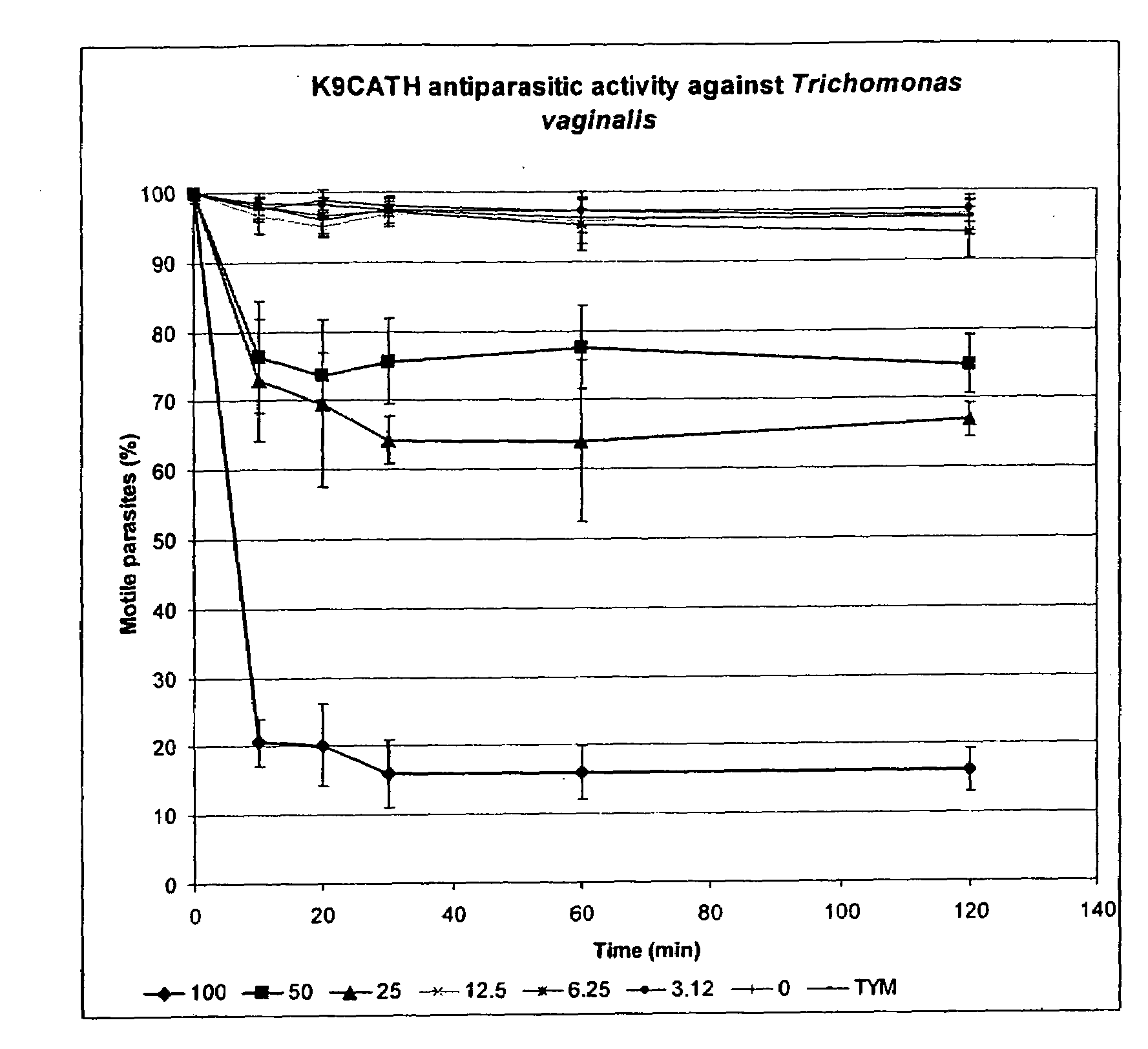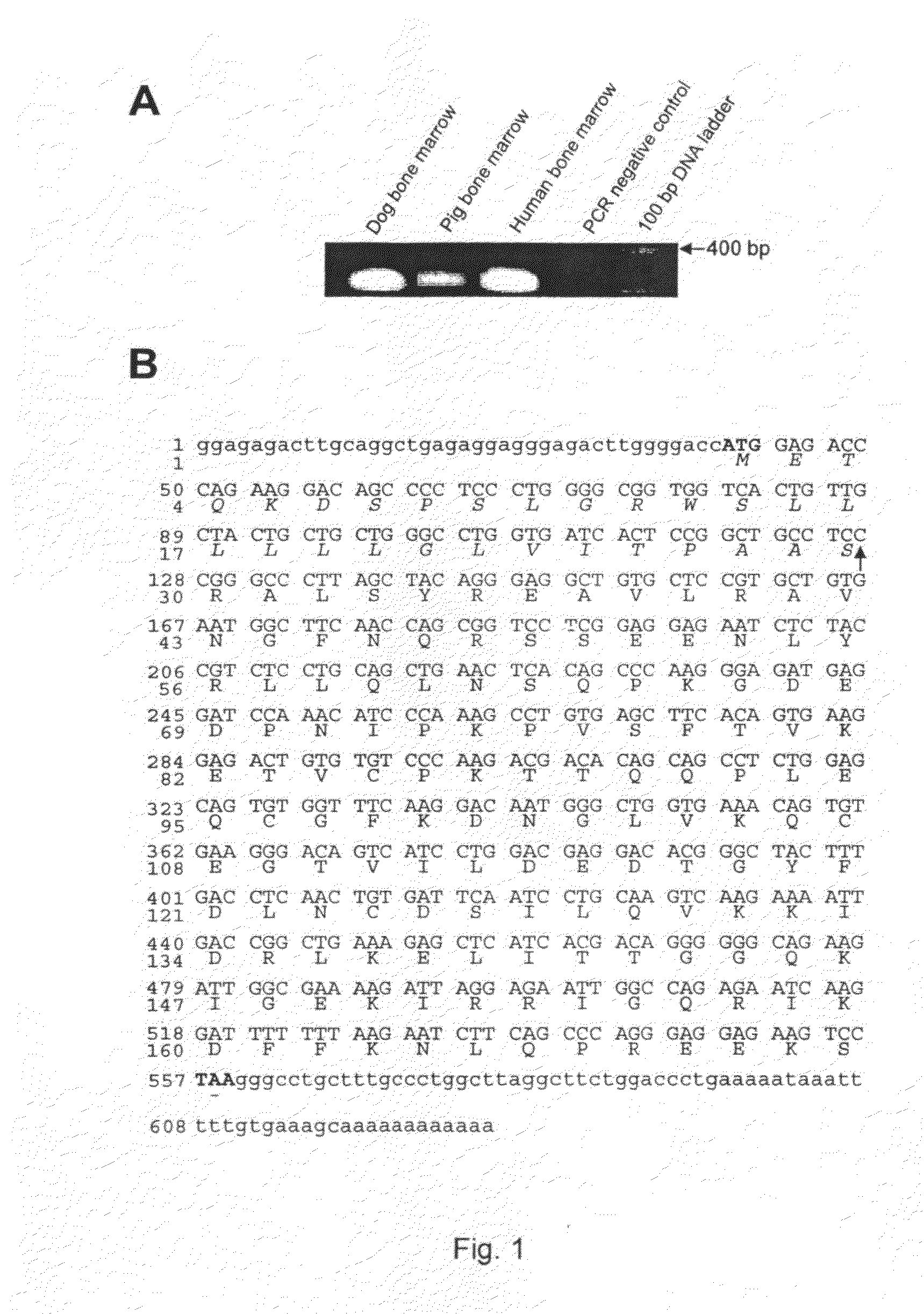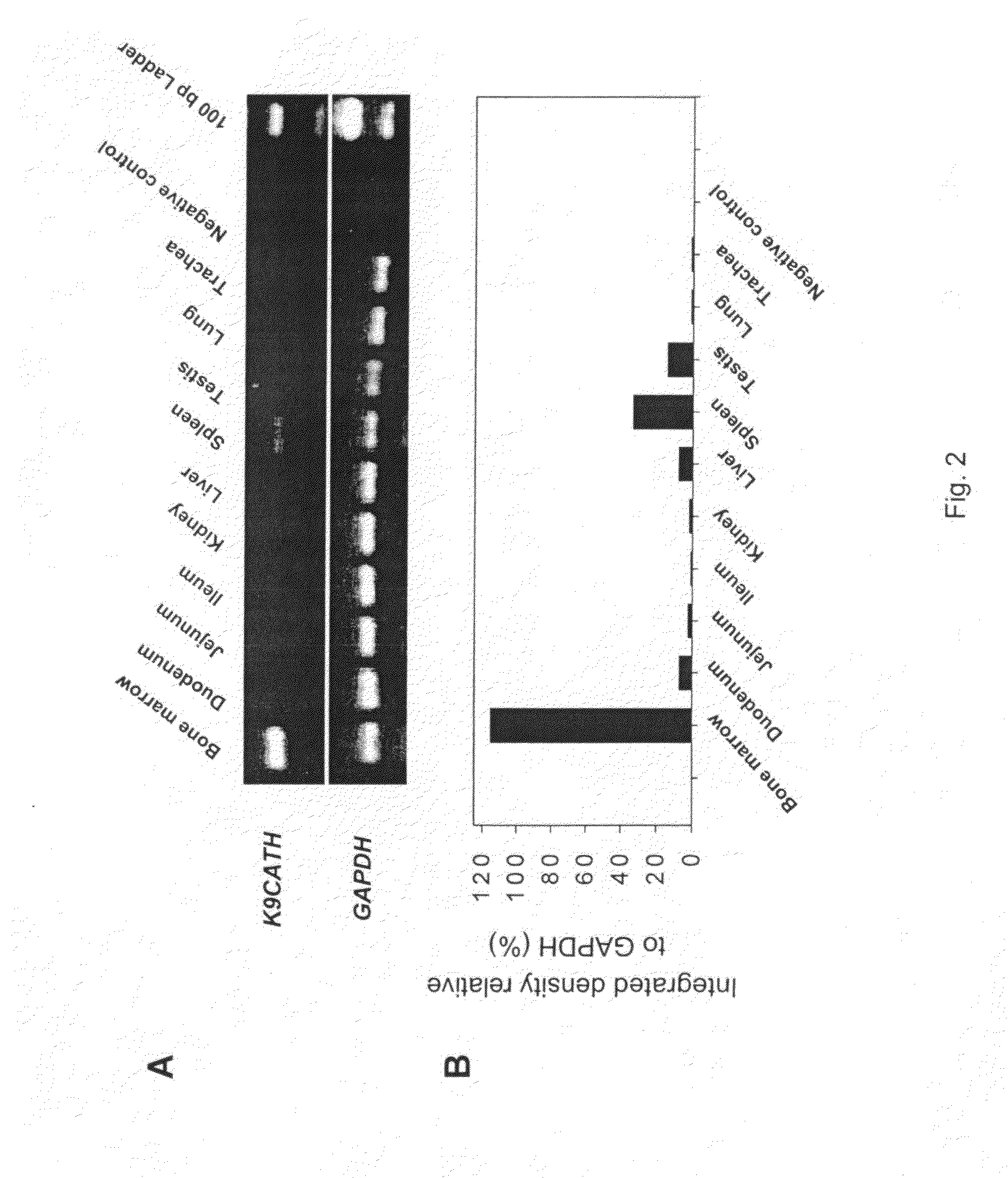Antimicrobial Cathelicidin Peptides
- Summary
- Abstract
- Description
- Claims
- Application Information
AI Technical Summary
Benefits of technology
Problems solved by technology
Method used
Image
Examples
example 1
Identification and Cloning of K9CATH Gene
[0175]The cDNA identification of K9CATH was established by mining the National Center for Biotechnology Information GenBank™. Complementary DNA sequences of human hCAP18 / LL-37 (GenBank™ accession Number NM004345), bovine cathelicidin 1 (NM174825), and porcine PR-39 (L23825), were aligned, and a degenerate primer pair was designed to specifically target the conserved sequence encoding the pre-proregion of the corresponding polypeptides. Primers (forward, 5′-TCACTGKTGCTYCTGCTGCT-3′ (SEQ ID NO: 39), and reverse, 5′-TGGCCTGGTYSARGGTSACTGT-3′ (SEQ ID NO: 40); where Y=C or T, K=G or T, S=C or G, and R=A or G) correspond to positions 40-59 and 241-262, respectively (Table 3), relative to the translation start codon of the human gene.
TABLE 3RACE and RT-PCR primers for K9CATHLocation inProduct sizeGenBank ™Primer nameSequence (SEQ ID NO)cDNA (nt)(bp)accession numberRACE primersSense outer primer5′-TCACTGKTGCTYCTGCTGCT-3′180-199NM004345(SEQ ID NO: 39)A...
example 2
Tissue Expression of K9CATH
[0179]To determine mRNA expression of K9CATH, tissue samples were collected from clinically healthy dogs following procedures approved by the Kansas State University Institutional Animal Care and Use Committee. All samples were placed in liquid nitrogen immediately after collection and stored at −135° C. until use. All dogs had a thorough clinical examination and routine screening including hematology, blood chemistry, and urinalysis prior to tissue collection. All clinical laboratory results were within normal limits. Human bone marrow RNA was purchased from Clontech (Palo Alto, Calif.), and porcine bone marrow RNA was obtained (Wu et al., Infect. Immun., 68:5552 (2000)). Total RNA was extracted with TRI Regent (Sigma-Aldrich, St. Louis, Mo.) after grinding the frozen tissues in liquid nitrogen.
[0180]A one-step RT-PCR was used to detect expression of K9CATH mRNA [30]. Briefly, total RNA was treated with RQ1 RNase-free DNAse I (Promega) to remove any genom...
example 3
Organization of the Canine CatheK9CATH Gene
[0182]The deduced amino acid sequence of K9CATH was used to search translated canine genomic sequences in the nonredundant (NR), high throughput genomic sequence (HTG), and whole genome shortgun sequence (WGS) databases in GenBank by using the TBLASTN program (Altschul et al., J. Mol. Biol., 215:403 (1990)) with default settings on the National Center for Biotechnology Information (NCBI) website (http: / / www.ncbi.nlm.nih.gov / BLAST / ). To derive the K9CATH gene structure, genomic sequences containing the canine gene were retrieved from GenBank and compared with its cDNA sequence by using the Spidey Program on the NCBI website (http: / / www.ncbi.nlm.nih.gov / IEB / Research / Ostell / Spidey). The chromosomal location of the K9CATH gene was revealed by using the Map Viewer Program (http: / / www.ncbi.nlm.nih.gov / mapview).
[0183]A search of the predicted K9CATH peptide sequence through all canine genome sequences currently available in GenBank identified two ...
PUM
| Property | Measurement | Unit |
|---|---|---|
| Fraction | aaaaa | aaaaa |
| Fraction | aaaaa | aaaaa |
| Molar density | aaaaa | aaaaa |
Abstract
Description
Claims
Application Information
 Login to View More
Login to View More - R&D
- Intellectual Property
- Life Sciences
- Materials
- Tech Scout
- Unparalleled Data Quality
- Higher Quality Content
- 60% Fewer Hallucinations
Browse by: Latest US Patents, China's latest patents, Technical Efficacy Thesaurus, Application Domain, Technology Topic, Popular Technical Reports.
© 2025 PatSnap. All rights reserved.Legal|Privacy policy|Modern Slavery Act Transparency Statement|Sitemap|About US| Contact US: help@patsnap.com



